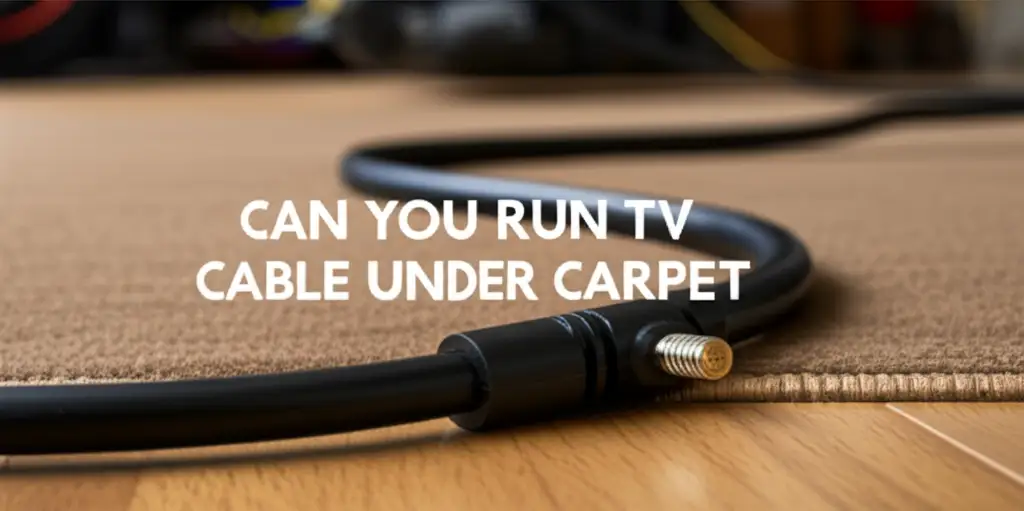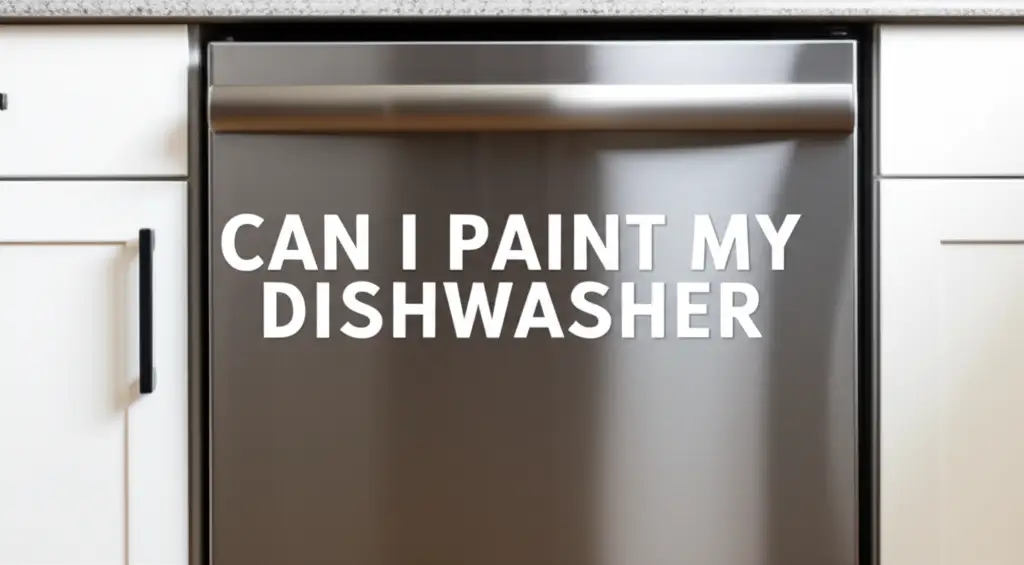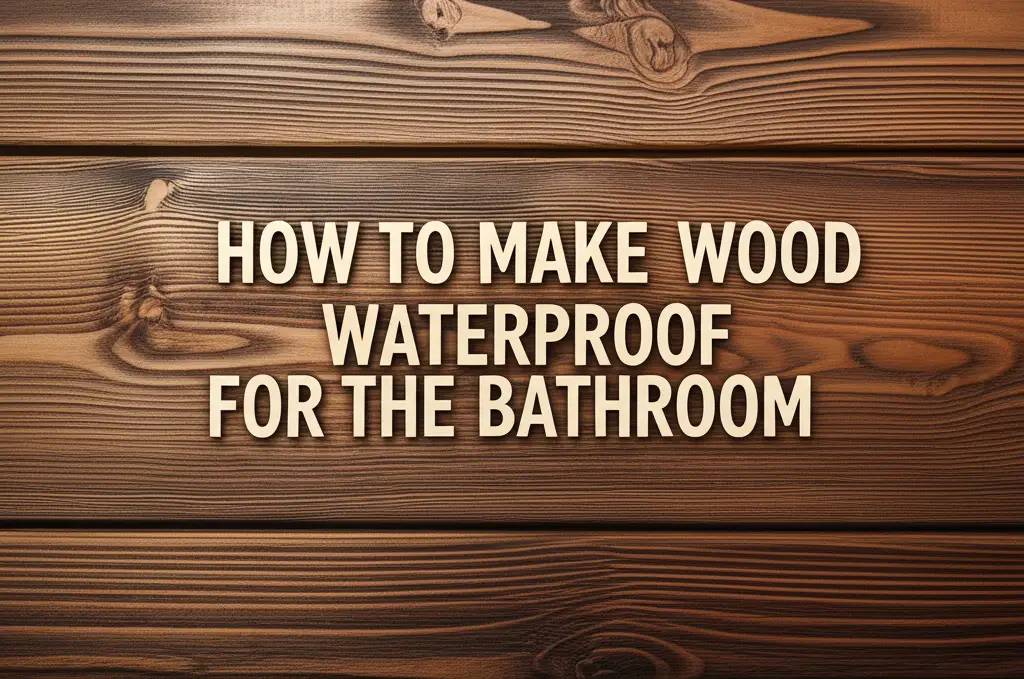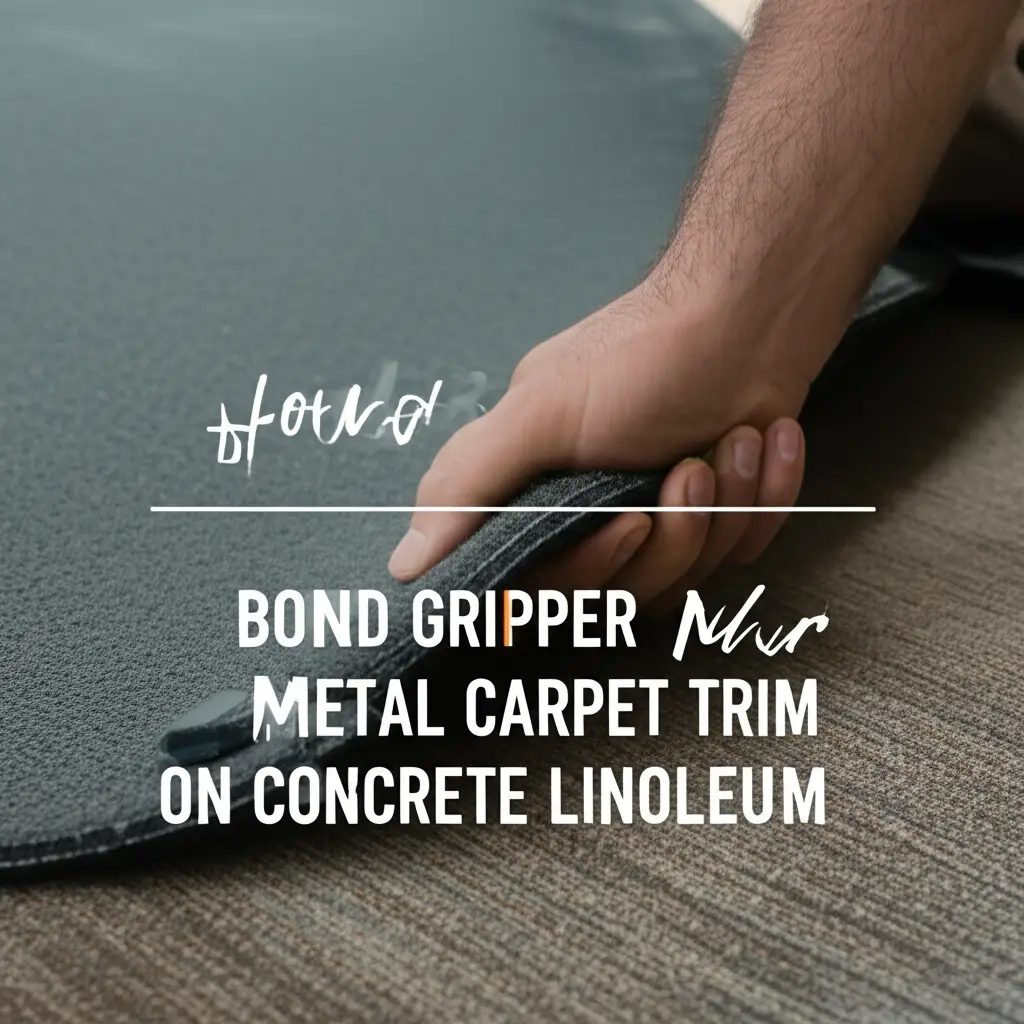· Liora Benning · Home Improvement · 12 min read
Can You Run Tv Cable Under Carpet

Running TV Cable Under Carpet: A Smart Solution?
Are you tired of seeing messy cables draped across your living room floor? Many homeowners face this common problem. Visible wires make a space look cluttered. They can also create tripping hazards. Hiding cables offers a clean, safe appearance. You might wonder if running TV cable under carpet is a good idea. This article explores the possibility. We will discuss the benefits, risks, and proper methods. We also cover tools, materials, and smart alternatives. By the end, you will know if this solution works for your home.
Takeaway
- Running TV cable under carpet is possible, but demands careful planning.
- Prioritize safety by avoiding electrical cables and protecting the TV cable.
- Use flat, durable coaxial cables designed for low-profile installation.
- Secure the cable properly to prevent movement and damage.
- Consider potential risks like cable damage, signal loss, and carpet wear.
Can you run TV cable under carpet?
Yes, you can run TV cable under carpet. This method helps hide unsightly wires and creates a cleaner look in your home. However, it requires careful planning and the right materials to ensure safety and prevent damage to both the cable and your flooring. Always use cables designed for this purpose.
The Appeal of Concealed Cables: Why Hide Your TV Wires?
We all desire a clean living space. Visible cables can spoil the look of any room. They create a messy appearance. Your home entertainment setup might look untidy with wires everywhere. Concealing these cables instantly improves aesthetics. A neat room simply feels better.
Beyond appearance, safety is a big concern. Loose cables are a tripping hazard. Someone could easily stumble over them. This risk is especially high for children or elderly family members. Hiding cables removes this danger. It makes your home safer for everyone.
Concealed cables also protect the wires themselves. Exposed cables can suffer damage. Pets might chew on them. Furniture can roll over them. These actions can fray wires or break connections. Running cables under carpet shields them from such wear and tear. This extends the life of your TV cable.
Imagine a living room with no visible wires. Your TV appears to float on the wall. Your media console looks tidy. This level of organization adds to your home’s value. It shows attention to detail. A clean setup enhances your viewing experience.
The Critical Risks: What Can Go Wrong When Running Cables Under Carpet?
While convenient, running cables under carpet carries risks. It is important to know these before you start. One major concern is cable damage. Heavy foot traffic can crush the cable. Moving furniture might also pinch or break it. This damage can lead to signal loss.
Signal degradation is another common issue. A damaged cable cannot carry a clear signal. You might experience fuzzy pictures or audio interruptions. This defeats the purpose of your entertainment system. Repairing or replacing a cable under carpet can be difficult. It often means lifting the carpet again.
Fire hazards are a serious concern if you place the wrong type of cable. Never run power cords under carpet. They generate heat. This heat can build up, especially under insulation like carpet. It creates a fire risk. Always use only low-voltage communication cables like TV coaxial cable. Even with low-voltage cables, proper installation is key.
Your carpet itself can suffer. A bulky cable can create a lump under the carpet. This lump can wear down faster than the surrounding areas. Over time, it might create a noticeable groove or thin spot. This damages your flooring. Choosing a low-profile cable helps minimize this risk. Understanding how to manage and protect your carpet is important, you can read more about how to keep a carpet down for tips on maintaining its integrity.
Selecting the Best Cable for Under-Carpet Use
Choosing the right cable is critical for success. Not all TV cables work well under carpet. A standard round coaxial cable might be too thick. It will create a noticeable bump. This bump can damage your carpet over time. It can also be a tripping hazard.
Look for flat coaxial cables. These cables have a much lower profile. They are designed to fit discreetly under flooring. Their flat shape distributes pressure better. This reduces the risk of carpet wear. Flat cables also make installation easier.
Cable durability matters greatly. The cable will face pressure from foot traffic. It needs a tough outer jacket. A strong jacket protects the inner wires. It prevents crushing or fraying. Look for cables with a robust PVC or rubber coating. This provides extra protection.
Signal quality is also important. Ensure the cable is rated for your TV signal. Most TV cables are RG6. This standard works well for modern televisions. Always check the cable specifications. A high-quality cable ensures a clear picture.
Consider the length you need. Measure your route carefully. Add a little extra for slack and routing. A single, continuous cable run is best. Avoid using multiple short cables with connectors under the carpet. Connectors can weaken the signal. They also create potential failure points. Choosing the right cable prevents problems later on.
Essential Tools and Materials for a Smooth Installation
Gathering the right tools and materials makes the job easier. You need the TV cable itself. Choose a flat, low-profile coaxial cable for best results. This type of cable lays flatter. It causes less wear on your carpet. You should also ensure it has a durable outer jacket for protection.
Cable protection is vital. Special cable channels or protectors exist. These are thin, flat conduits. You place the cable inside. Then, you lay the protector under the carpet. This adds an extra layer of defense against crushing. It also helps keep the cable straight and in place.
Strong adhesive tape is necessary. Look for double-sided carpet tape or heavy-duty electrical tape. This tape secures the cable to the subfloor. It prevents the cable from shifting. A shifting cable can create bumps or become damaged. Securing it ensures it stays flat.
You will need tools to lift your carpet. A carpet tucking tool or a flat-head screwdriver can help. These tools allow you to gently lift the carpet edge. They also help to tuck the carpet back down. Be careful not to damage the carpet or subfloor. If you are working with a larger area, or perhaps a commercial-grade carpet, understanding how to take up commercial carpet might provide helpful insights on carpet removal techniques.
Cable ties or clips can help manage excess cable. They keep the cable neat at the start and end points. A tape measure is useful for accurate routing. A utility knife or cable stripper might be needed for connecting the cable to your devices. Having these items ready saves time. It also helps you achieve a professional-looking result.
Step-by-Step Guide: How to Safely Install TV Cable Under Carpet
Installing TV cable under carpet requires a careful approach. First, plan your route. Identify the shortest and safest path. Avoid areas with heavy foot traffic. Stay away from door frames if possible. Mark your path with painter’s tape. This helps you stay on track.
Next, prepare the area. Gently lift the carpet edge along your planned route. You can use a flat-head screwdriver or a carpet tucking tool. Be careful not to tear the carpet or damage the padding. Lift only enough to create space for the cable.
Lay the cable along the marked path. Ensure it lies perfectly flat. Avoid any twists or kinks. A twisted cable can create a noticeable lump. It also increases the risk of damage. If your cable is round, consider using a specialized flat cable protector. This flattens the profile. It also provides extra protection. To understand which carpet types might be more amenable to this process, consider researching which carpet are used on carpet floor for insights on common carpet materials and structures.
Secure the cable to the subfloor. Use strong, double-sided carpet tape or cable clips. Place tape every few feet. This prevents the cable from shifting. A secure cable will not move or create ripples. This step is crucial for long-term success.
Finally, carefully lower the carpet back down. Use your hands or a carpet tucking tool to smooth it out. Make sure no lumps remain. Press down firmly to re-engage the carpet with its tacks or adhesive. Once the carpet is flat, connect your TV cable to the devices. Test the signal to ensure everything works correctly. This careful installation prevents future headaches.
Protecting Your Investment: Safeguarding Cables and Carpet
After installation, continued protection is important. The cable under your carpet faces ongoing stress. Foot traffic and furniture movement can cause wear. Taking extra steps now saves you problems later. Protecting the cable ensures a long life for your setup.
Consider adding a cable protector or channel. These flat, rigid strips encase the cable. You lay them over the cable on the subfloor. Then, you put the carpet back. This adds significant protection against crushing. It also helps keep the cable perfectly flat. This prevents any noticeable bumps in your carpet.
Regularly check the area. Walk along the cable path. Feel for any new bumps or shifts. If you notice a lump, gently lift the carpet again. Re-adjust the cable and re-secure it. Early detection of issues prevents bigger problems. This simple check takes little time.
Protect your carpet from wear. A cable under carpet can create a pressure point. This can lead to premature wear on your carpet. Using a very low-profile cable helps. Placing the cable in low-traffic areas is also smart. If you are concerned about specific areas, you might consider what options are available for safeguarding your flooring. For example, what can I put over carpet to protect it offers ideas on protecting carpet surfaces from various stresses, including those from hidden cables.
Avoid running heavy furniture over the cable path. If you must move furniture, lift it. Do not drag it. Dragging heavy items can crush the cable. It can also damage your carpet. Proper care extends the life of both your cable and your flooring. These simple steps protect your investment.
Smart Alternatives to Under-Carpet Wiring
Running cable under carpet is one solution. However, other options exist. Some alternatives might suit your home better. These methods can also hide wires effectively. Exploring all choices helps you pick the best one.
Wireless solutions are increasingly popular. Wireless HDMI transmitters send your TV signal without cables. They can connect your TV to a media player or gaming console. This eliminates long cable runs. However, they need power. They also might have range limitations. Signal interference can also be an issue.
Cable raceways offer a visible but neat solution. These are channels that attach to walls or baseboards. You run your cables inside them. Raceways come in various colors and designs. Some can even be painted to match your walls. They are easy to install. They also provide good cable protection. Raceways are a good choice if you cannot lift your carpet.
In-wall cable routing provides the cleanest look. This method involves running cables inside your walls. It requires more effort and tools. You might need to cut drywall. Special in-wall rated cables are also necessary. This solution is permanent and virtually invisible. It is often done during renovations or new construction.
Behind-furniture routing is a simple trick. If your TV is near a console or cabinet, hide cables there. Route wires behind or inside furniture. Use cable ties to keep them neat. This works well for short cable runs. It is not suitable for crossing open floor areas. Each alternative has its pros and cons. Choose the one that fits your needs and skill level.
Frequently Asked Questions
Is it safe to run TV cable under carpet?
Running TV cable under carpet can be safe if done correctly. Use a flat, low-profile coaxial cable designed for this purpose. Never run electrical power cords under carpet, as they pose a significant fire risk. Ensure the cable is well-protected and secured to prevent damage.
What type of cable is best for this?
The best type of cable for under-carpet use is a flat coaxial cable. These cables have a thin profile, which minimizes lumps under your carpet. They also usually come with a durable outer jacket that protects against foot traffic and pressure, ensuring signal integrity.
Will running cable under carpet damage my carpet?
Running cable under carpet can potentially damage your carpet over time. A thick cable creates a pressure point, which can lead to premature wear or a visible groove. Using a flat cable and placing it in low-traffic areas helps minimize this risk.
Can I run power cables under carpet too?
No, you should never run power cables under carpet. Power cables generate heat, and the carpet acts as insulation, trapping this heat. This can lead to overheating, cable degradation, and a serious fire hazard. Only low-voltage communication cables like TV coaxial cables should be considered.
How do I hide the cable once it comes out from under the carpet?
Once the cable emerges from under the carpet, you can hide it using various methods. Use small cable clips to run it neatly along the baseboard or behind furniture. You can also use a small cable raceway that matches your wall color, providing a clean and organized look.
Will running the cable under carpet affect signal quality?
Running the cable under carpet can affect signal quality if the cable is damaged. Kinks, pinches, or crushing can degrade the signal, leading to poor picture or sound. Using a durable, flat cable and ensuring proper installation and protection helps maintain signal integrity.
Conclusion
Running TV cable under carpet is a practical solution for a cleaner, safer home. It effectively hides unsightly wires. It also removes tripping hazards. You can achieve a neat look in your living space. However, success depends on careful planning and execution. Always choose the right cable. A flat, durable coaxial cable is essential.
Remember to prioritize safety above all else. Never run power cords under your carpet. Secure the TV cable properly to the subfloor. This prevents shifting and damage. While beneficial, this method has risks. Cable damage, signal issues, and carpet wear are possibilities. Regular checks can help prevent these problems.
If running cables under carpet seems too risky or complex, consider alternatives. Wireless solutions, wall-mounted raceways, or in-wall routing offer other ways to conceal wires. Each option provides different levels of invisibility and installation effort. By understanding all choices, you make an informed decision for your home. Make your living space tidy and functional today.





